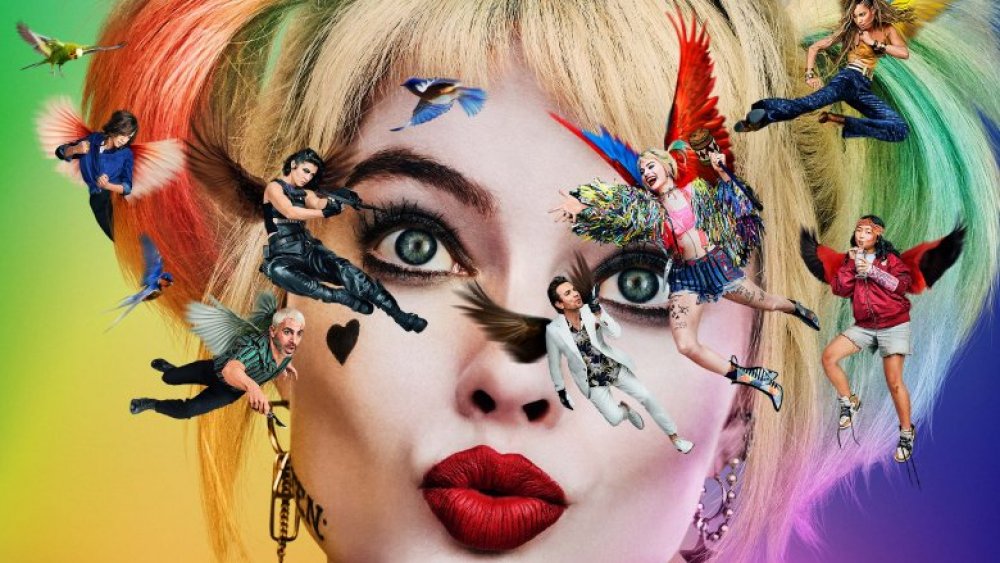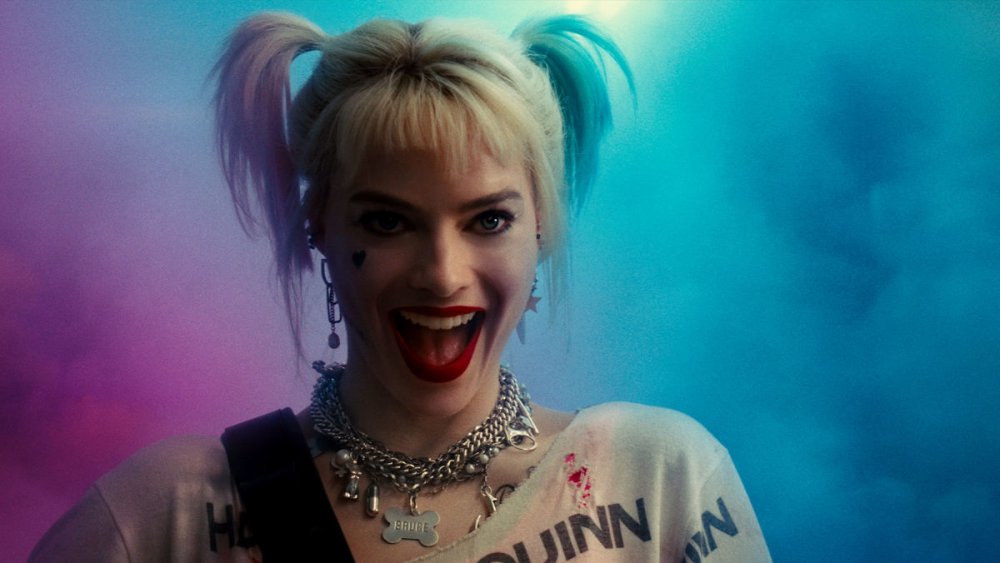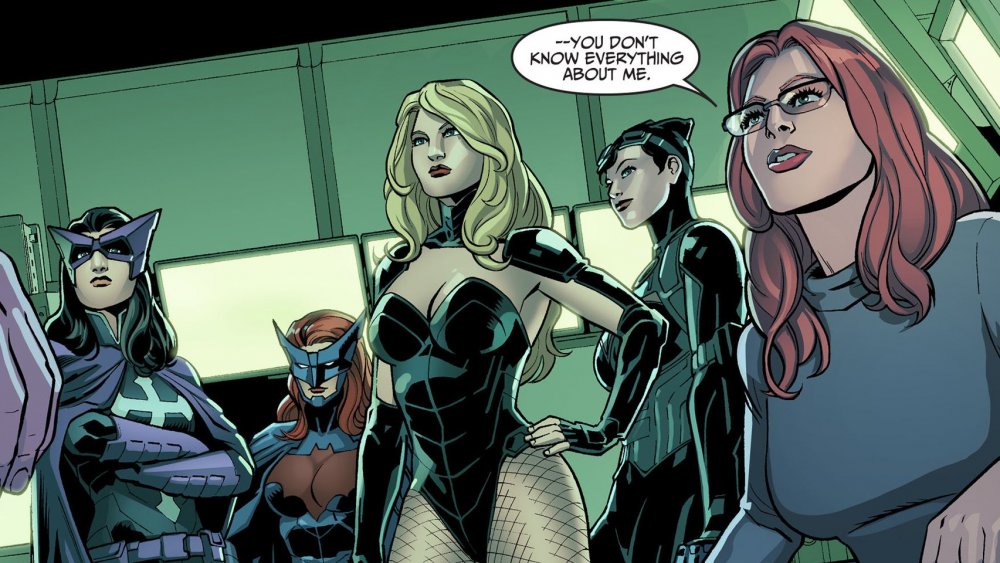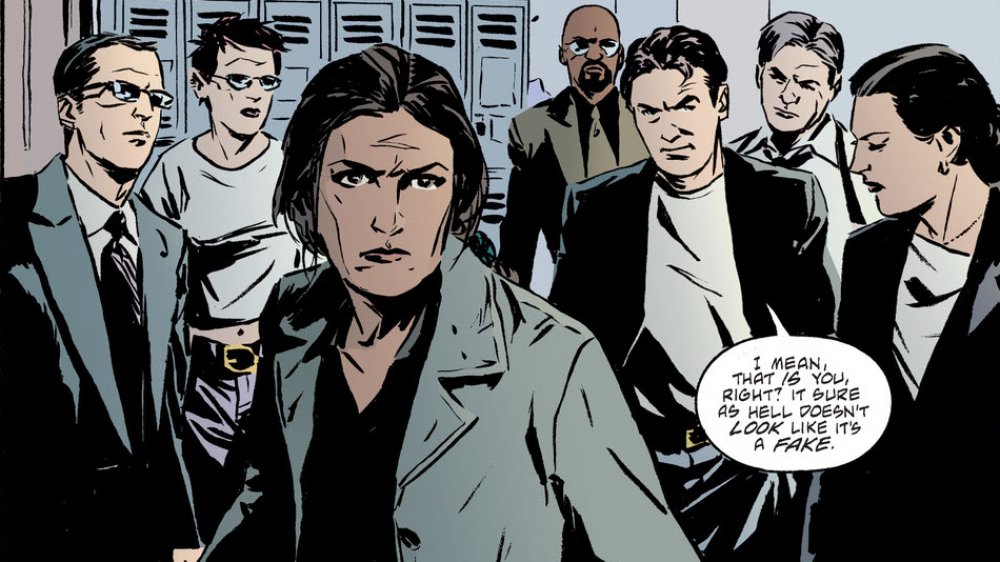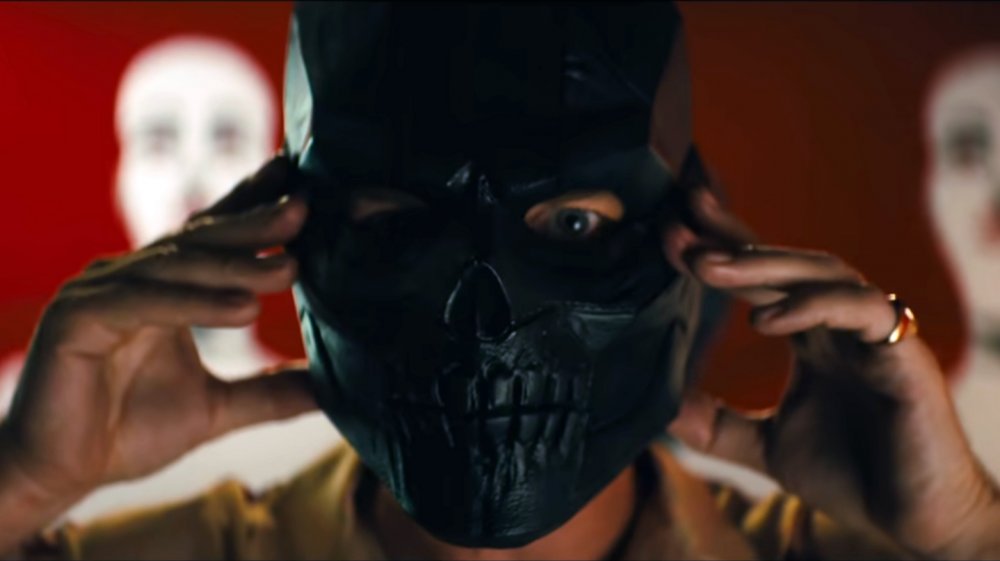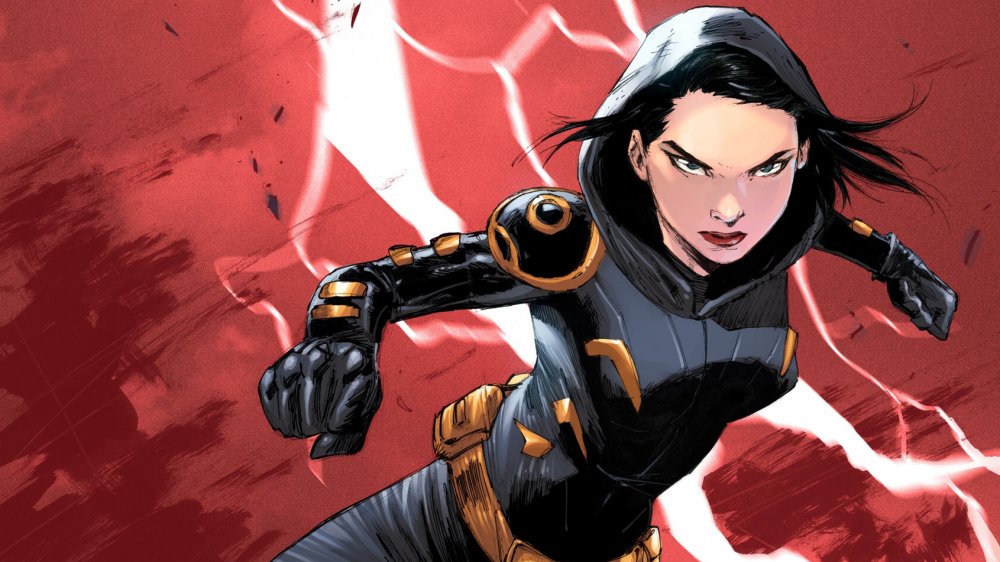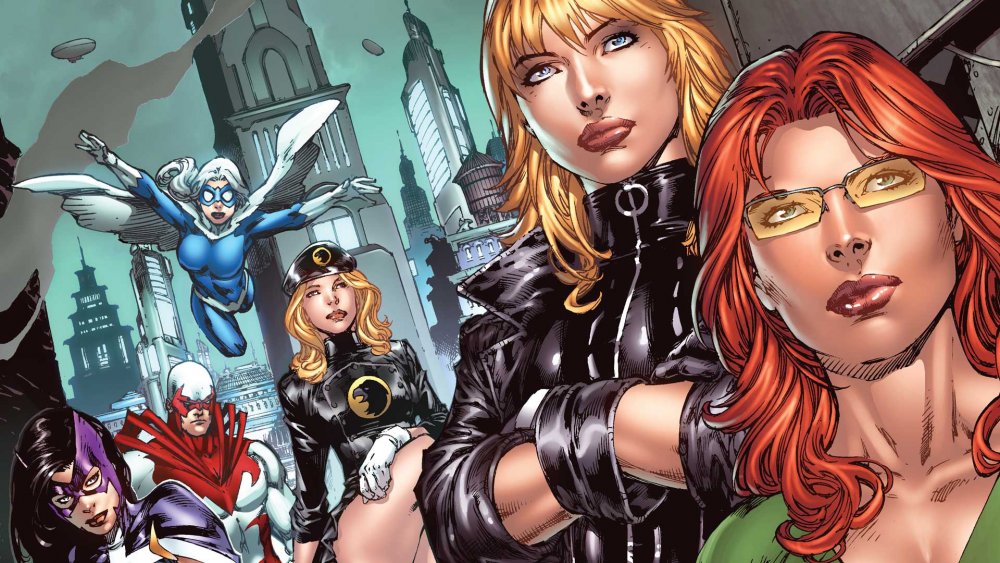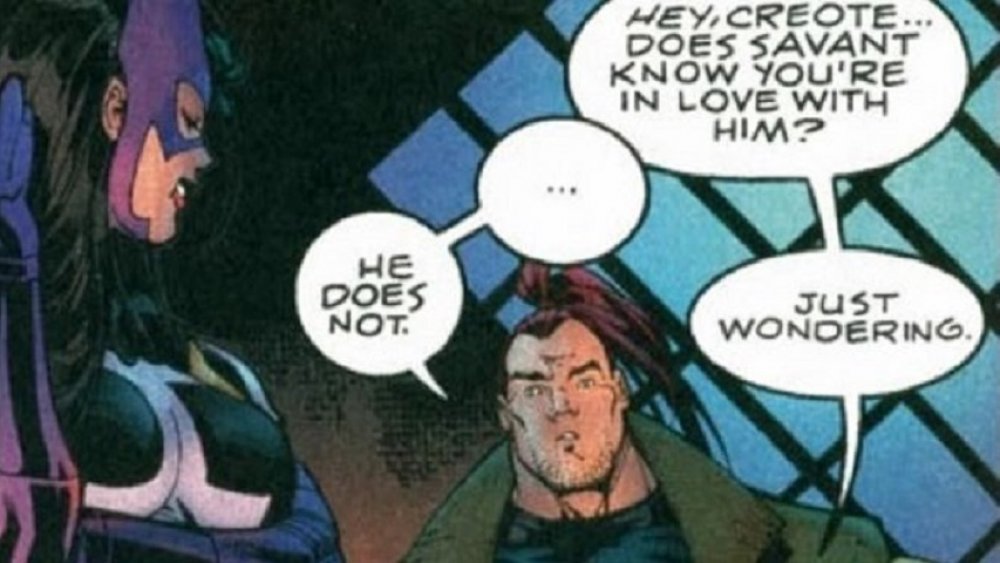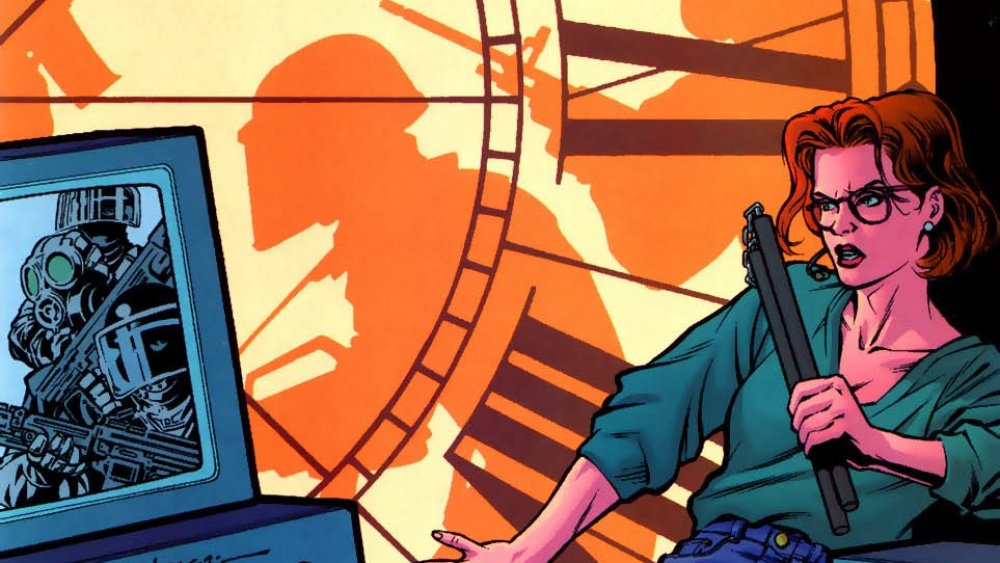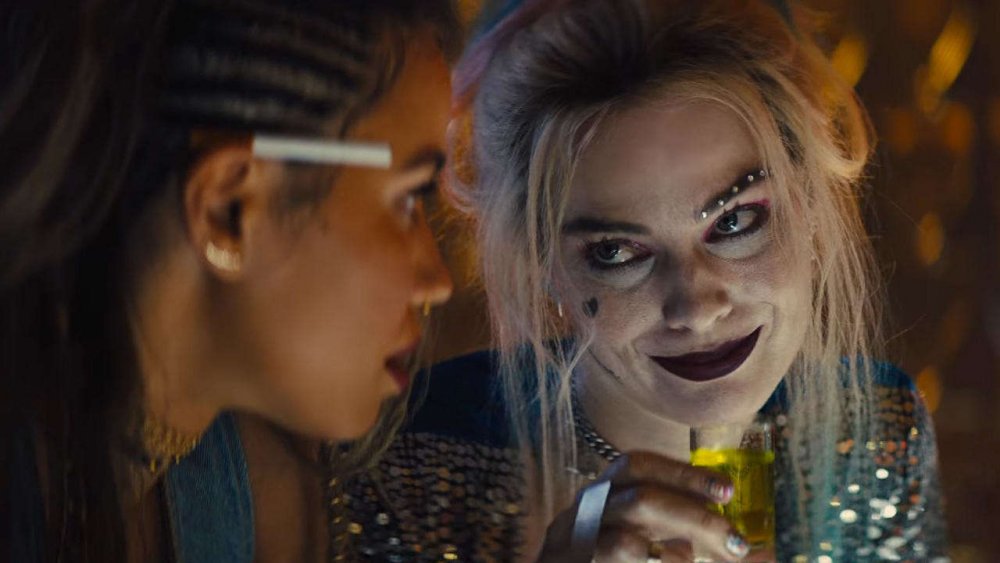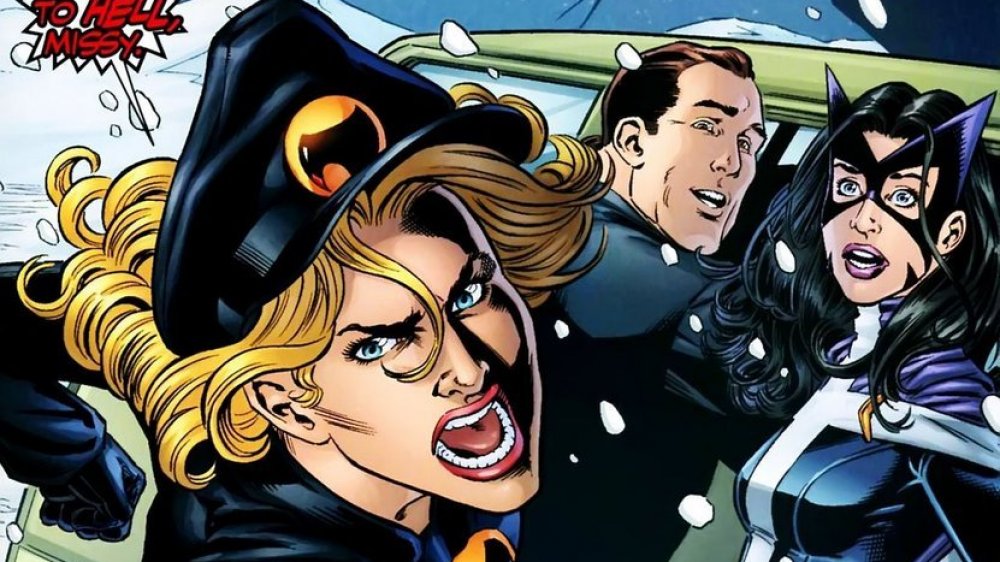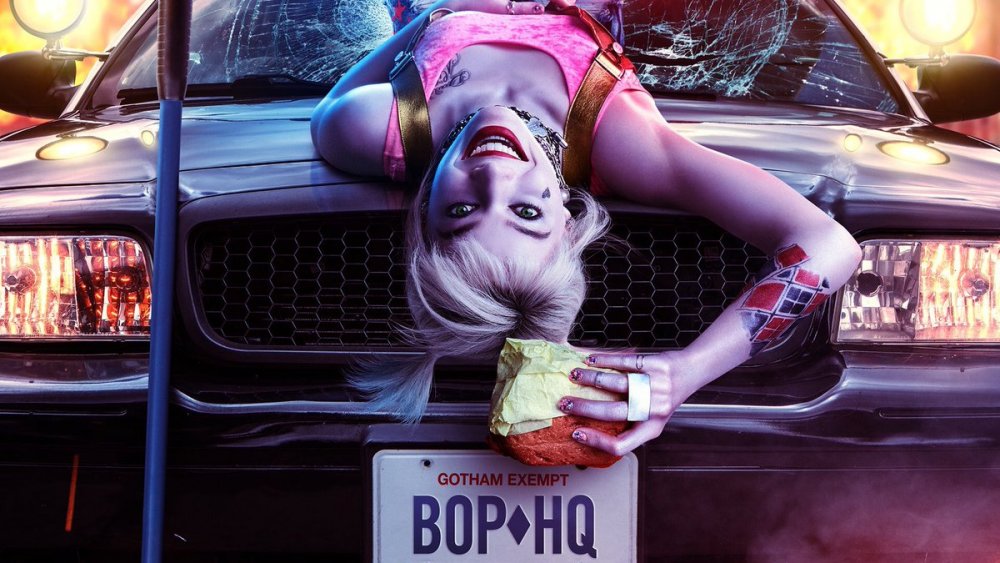What Birds Of Prey Got Wrong From The Comics
The Birds of Prey, led by the irrepressible Harley Quinn, are a ragtag band of women out for revenge, absolution, and more than a little mayhem. Disgruntled with the justice system as a detective just trying to do some good? Welcome aboard, Renee Montoya. Ex-Mafia princess with scores to settle by the dozen? Bring your crossbow, Huntress, it's all good. Runaway kid with a stolen diamond in your pocket? No problem, Cassandra Cain. There's no past too strange, no rock-bottom too rocky, no personal vendetta too particular to disqualify you from membership of this ragtag band of anti-heroines.
None of this comes as a surprise to longtime fan of the Birds of Prey, a team that joined the DC universe in 1996. Yet the team of the silver screen bears little resemblance to the team on the page. Headlining characters are missing, pivotal plot threads have been excised, and the mission of the organization itself has been entirely reshaped. Just how dramatically do the cinematic Birds differ from those of the comics? Join us as we take a deep dive into the comics canon to answer that question, from the remodeled lineup to the strikingly different settings.
Harley has no history with the Birds of Prey
Birds of Prey might be the girl gang story of Margot Robbie's dreams, but its star is most definitely Harley Quinn. It's her trauma, frustration, and search for emancipation that fuels the story, her presence that hooks in audience members unfamiliar with the likes of Cassandra Cain and Huntress, and her voice that announced, with the first trailer, that this is a movie for all who are "so freaking over clowns." She is the Birds' manic mistress, as much a den mother as she is a mallet-swinging warrior queen.
In the comics, however, Harley has pretty much nothing to do with the Birds of Prey. This is a striking enough fact on its own, but all the more so when the history of the Birds is taken into account. The Birds of Prey have, over the course of their history as a team, drawn so many characters into their orbit that it's actually more notable to have somehow escaped membership as a DC female than it is to have spent time on the team. Though the Birds lean towards good guys, Harley's moral murkiness isn't an obstacle. Poison Ivy, Lady Shiva, and Catwoman have all been claimed affiliation at some point. By whatever winds of comic book chance, the Clown Princess of crime has never spent much time with DC's premiere girl gang until they made the jump from the printed page to the silver screen.
Where is Barbara Gordon?
The Birds of Prey have always been a loose organization of do-gooders. Core members have certainly emerged over the years, but heavy hitters and DC obscurities alike pass through the revolving door of membership by the dozen. Kryptonians, New Gods, runaway teens — they might only stick around for an issue or two, but their time with the Birds is memorable. It's part of the team's magic, having an ever-changing mix of personalities and allegiances that take the story in intriguing new directions.
Barbara Gordon, however, is the exception to this mutability. Leader of the team from the very beginning, she's the foundation the Birds have always been built upon, her computer skills the pillar of nearly every operation. Even Black Canary, the other half of the team's very first two-person roster, has taken time away. Only Barbara has remained implacably in place. Birds of Prey takes many liberties in bringing the team to the screen, but none are so glaring as excising Barbara Gordon.
The surprising addition of Renee Montoya
Renee Montoya is, perhaps, the Birds' unlikeliest member, being a seasoned police officer amidst the law-breaking likes of Harley Quinn and Huntress. She's no innocent, however. Being a cop has made her as intimately familiar with the system's failings as anyone can be, yet just as doggedly dedicated to doing good as the day she joined the force. Moreover, her personal history as a Dominican-American woman from a rough part of town and an out lesbian provides unique story opportunities, resulting in some of the best DC comics of the past few decades.
Surprisingly, though, all those riveting comics had nothing to do with the Birds of Prey. Renee Montoya began life as a character created for Batman: The Animated Series — a distinction she shares with Harley Quinn, who also made the jump from the cartoon to the comics. Gotham Central, an Eisner Award-winning police procedural centered around the Gotham's Major Crimes Unit, made her into the character fans know and love, as it saw her confront disillusionment, corruption, romance, and the inherent strangeness of being a cop on the Batman beat. Later years saw her enter into a romance with Batwoman, take on the mantle of the Question, and operate out of a lighthouse on the North Carolina coast. Though the "Blackest Night" event drew her briefly into Oracle's orbit, she's never actually been part of the Birds. Luckily, she fits right in.
The Birds of Prey movie borrows some Batman villains
The Birds of Prey don't really have their own rogues' gallery (although the Calculator and Lady Shiva are both at their best when facing off against the Birds), so for the movie, writer Christina Hodson had to borrow a couple of baddies from the Dark Knight's extensive roster of villains. Bruce has plenty of enemies already. He won't miss 'em.
However, Neither Black Mask nor Victor Zsasz made the translation from page to screen completely intact. In Birds of Prey, Roman Sionis is the black sheep of the Sionis clan. He was expelled from the family business, the Janus Corporation, and over time built up a formidable criminal empire. At the end of the day, though, he's still just trying to prove himself to daddy. Victor Zsasz, Roman's right-hand man, is a remorseless killer who memorializes each one of his victims by cutting marks into his body.
In terms of broad strokes, Birds of Prey gets everything right, but the devil's in the details. In the comics, Sionis actually owns Janus Cosmetics — he inherited the company after murdering his parents — and used that money to fund his illegal enterprises. He's ruthless and sadistic, and unlike McGregor's take, fairly reserved. Similarly, the comic book version of Zsasz is a straight-up serial killer who works for no one but himself. He murders for fun, not business, and tends to walk around without a shirt in order to show off his grizzly scars. Same ideas, but very, very different executions.
Cassandra Cain's unique language skills
The gulf between Cassandra Cain's Birds of Prey incarnation and her character in the comics is wide indeed. To begin with, she's best known as one of many women to have taken on the mantle of Batgirl, which she operated under for much of the early 2000s. Though she's taken other names as well, most recently Black Bat and Orphan, she's likely still best known as Batgirl and never, as she is in the movie, as an independent figure using her own name.
Beyond that, however, is the enormous change the movie has wrought in her personality. The Cassandra Cain of Birds of Prey is a jorts-sporting kid who asks Harley Quinn if she's "that psycho chick," while the Cassandra Cain of the comics ... well, she's not likely to say anything at all. Raised to be the perfect assassin, Cassandra was never taught to read or write, in the hopes that replacing these language skills with training in how to read the body language of others would make her an unstoppable martial artist. In some ways, this worked. Cassandra's understanding of the human body is almost inhuman in its perfection. Yet this left her mute, illiterate, and utterly cut off from the world, a problem indeed when she escaped her mendacious home to become a hero in Gotham City. She does, eventually, learn to communicate, but she definitely never comes anywhere near the flippant, slang-slinging ragamuffin of the film.
A tactical team vs. a band of misfits
"Turns out I wasn't the only dame in Gotham looking for emancipation," Harley Quinn intones in the Birds of Prey trailer. Harley, Cassandra Cain, Dinah Lance, Helena Kyle, and Renee Montoya are indeed all held back by systems, organizations, and people that ignore or outright denigrate their dreams, goals, and drives. And so they escape them, crashing into each other in the neon-splashed conflagration that is Birds of Prey. They're strange, they're wild, and they're possibly the unlikeliest team of the DC Extended Universe. But a team they become, regardless.
The Birds of Prey of the comics, however, are a lot less haphazard. Born out of a partnership between Oracle and Black Canary, the Birds take down international smuggling, corruption, and human rights abuses with a flexibility and quietude that typical superheroes couldn't manage. That isn't to say that the Birds haven't acted rashly, nor that every member has been carefully screened and vetted. But they've always been a crimefighting operation first and foremost and a home for ragtag heroines and antiheroines second, if not third. The Birds have always been the team that takes on human trafficking and the sins of cyberspace, guided by Oracles' five-steps-ahead forethought and enforced by the brute strength of Black Canary, Huntress, and others. It's all quite a bit more cool, collected, and carefully concocted than the Birds of the movie but no less entertaining.
In the Birds of Prey comics, guys can join the team
The Birds have always been a female-fronted and female-majority super-team. Though the movie's lineup is different than that of the comics, it continues this history with an all-woman roster of fighters, cops, and misfits. It is, as Margot Robbie has detailed, a concerted choice. Birds was born as a "girl gang" story, in which women get to be friends and take down anyone who says they can't play as hard as the boys in bat ears.
The Birds' nature as a woman-first superhero operation has always been one of the core conceits of the team and likely always will be. Yet men have never been excluded from the team's ranks, and they've even become longstanding members with a hand in some of the team's most legendary stories. Some are characters with deep roots in the DC Universe, as in the case of Hawk and Wildcat, while others, like the brilliant Savant and his right-hand man turned lover Creote, are unique to the Birds book. What unites them, and all the other men who've assisted, collaborated, or outright joined the Birds at some point, is their belief in the team's methods, goals, and track record. Does this mean a second Birds movie might see the team working with, say Captain Boomerang? Only time will tell, but the precedent is there.
Clubs instead of clock towers
Suicide Squad located the Joker and Harley in Gotham's club scene, with the Clown Prince of Crime as a Lamborghini-driving gangster and Harley as the go-go girl he offers nights with to sweeten underworld deals. Though Birds of Prey is defined by Harley leaving that life, the club scene is still a major location of the film, especially as other members of the team bring their own associations with it into the mix.
That late-night world of dance floors and VIP rooms isn't, however, one the Birds of the comics are particularly associated with. If there's any one location the Birds are associated with, it's the Gotham clock tower they work out of. It also acts as Oracle's center of operations, archives, and her home. Beyond this place, the Birds briefly relocated to Platinum Flats, a fictional town in Silicon Valley — a change that symbolizes their real home in cyberspace. Indeed, if there's any one location the team spends most of its time in, it's the vast online landscape that Oracle explores in search of malfeasance. Operating off of whatever she finds, the Birds range far and wide as one of the DC universe's most international teams. Sure, sometimes they turn up in a club or two, but that's never where they stay, and it's definitely not a place any of them call home.
Are the Birds of Prey heroes or villains?
The women in the film version of Birds of Prey aren't bad, exactly, but you couldn't comfortably call them the good guys. You've got Harley Quinn, for one thing, who's spent her entire cinematic career as a Batman-fighting, Arkham-escaping, joyride-taking villain. Huntress, Black Canary, and Cassandra Cain's pasts have been shaped by thieving, mob affiliation, and violence, and though they're working towards different ends now, they're not exactly joining the Justice League. The Birds aren't good guys, yet neither are they bad. If anything, they're trying to figure out what "good" even means to them anymore and how they might achieve it, even if it's through their less-than-squeaky-clean skills.
The Birds of the comics, in contrast, are firmly aligned with the DC universe's forces of good. Of the team's core members, Huntress is probably the one most comfortable with law-breaking, but even then, she's hardly a hellion. The Birds are good guys in the Batman mold, doing good by night, largely through subterfuge and science. That approach might come with darker costumes, more contact with organized crime, and a tad more espionage than the likes of the Super Friends, but it's still very much in line with what it means to be a superhero in the world of Superman and Wonder Woman. Hard-bitten ex-cons looking to claw their way into a better, if not necessarily more law-abiding life, they are not, except in movies led by Harley Quinn.
Missing: One time-traveling ace pilot
Ever heard of Blackhawk? Likely not, despite the fact that his comics once rivaled Superman's in sales. He and his gang, the Blackhawk Squadron, crammed the pages of Blackhawk with tales of their ace pilot action for years. Radio series, prose novels, and film serials were produced, and a film directed by Steven Spielberg, on record as having been interested in making a Blackhawk movie for years, is finally entering production. That's quite a resume for a title few but the most diehard fans are familiar with.
The Birds of Prey, however, kept the Blackhawk flame alive for years in the character of Lady Blackhawk, aka Zinda Blake. A 1959 creation, Zinda debuted as a pilot bound and determined to become the first female member of the Blackhawks. When the "Zero Hour" event catapulted her into a time warp, she landed in the modern DC universe and ended up recruited to the Birds of Prey where she became a core member of the team. Despite this, she's nowhere to be found in the cinematic Birds of Prey. Hopefully this is amended in future installments. After all, who wouldn't want to see Harley Quinn learn how to Lindy hop?
The Birds of Prey movie is way grittier than the comics
Birds of Prey has never been a series without darkness. Darkness has, in fact, always been a big part of the formula. Oracle's journeys through cyberspace tend to reveal the insidious sort of crime the Birds set out to stop. Abuse, extortion, slavery — that's all firmly within the Birds wheelhouse and has been from the beginning.
And yet one of the most striking differences between the comic and the movie is the latter's grittier tone. Bones crunch, blood spatters, and noses break in Birds of Prey. When the Birds of the comics get into the various dens of depravity, they disrupt, do their job, and get out, while the Birds of the film revel in those spaces, appealing to an audience that wants theatrical revenge. The movie is a story about grit and grime, clubs and kingpins, blood and baseball bats. So too is it, like the comics, a story about women making the world a better place one fistfight at a time. The difference lies in the fistfights' place in the story. One treats them as a means to an end, while the other glories in their up-close catharsis.
